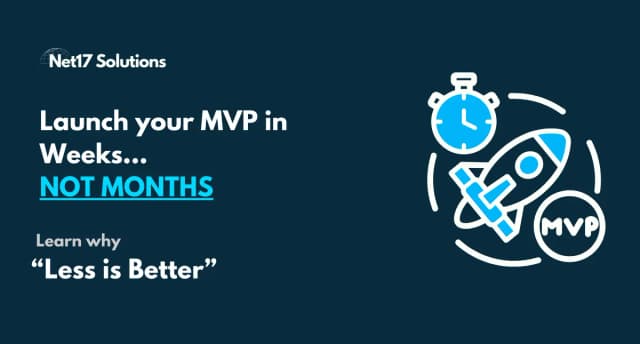Launch Your MVP in 30 Days: Step-by-Step Guide
Inder Pal Singh
07 Dec 2024
Last Updated
07 Dec 2024

Quick Summary
Gone are the days when building an MVP took months of effort and countless sleepless nights. Smart founders are now shipping their ideas to real users in just a few weeks. The key? Testing core features before scaling. In this blog, we’ll walk through a step-by-step plan to launch your MVP in 30 days without losing your sanity.

In this blog, we’ll break down a step-by-step plan to launch your MVP in 30 days. Whether you’re a seasoned founder or a first-timer, this guide will help you avoid the common pitfalls and launch with confidence.
Week 1: Work on the Prototype
Before diving into code, take a moment to sketch out your idea. This stage is all about clarity.
Tools for Prototyping
Here are a few tools that can save you hours:
- Figma: Great for collaboration and user flows.
- Adobe XD: Perfect for creating interactive designs.
- Balsamiq: A simple tool for low-fidelity wireframes.
Prioritizing Features
Not every feature idea needs to make the cut. Start with:
- Features that solve the core problem.
- What makes your product unique.
- What your target audience truly values.
Pro Tip: If you can’t explain why a feature is essential, it’s probably not.
Why Perfection is the Enemy of Progress
It’s tempting to tweak every pixel and make everything beautiful. But guess what? Your users won’t notice if the button is slightly off-center. Focus on functionality and usability instead.
Weeks 2 & 3: Start Backend + Frontend
With your prototype ready, it’s time to bring it to life. This phase requires speed, focus, and a good plan.
Choose the Right Tech Stack
Your tech stack can make or break your timeline. A few suggestions:
- Frontend: React, Next.js.
- Backend: Firebase, Supabase, or Node.js with Express.
- Database: MongoDB or PostgreSQL for quick setups.
The 48-Hour Challenge
Commit to building 80% of your MVP’s core functionality in two days. It sounds daunting, but this constraint forces you to focus on what matters.
Example: If you’re building a food delivery app, prioritize order placement and delivery tracking. Leave fancy animations for later.
Avoid Common Pitfalls
- Don’t waste time on features no one asked for.
- Skip complex authentication if it’s not essential (use dummy data or basic setups for testing).
- Avoid perfectionism—it slows you down.
Pro Tip: Use templates and pre-built components to speed up development.
Week 4: Prepare for Launch
Your MVP is built, and now it’s time to share it with the world (or at least a small part of it).
Test With a Trusted Circle
Share your MVP with friends, family, or a small group of industry experts. Ask them to:
- Test functionality.
- Point out any issues.
- Share their honest thoughts.
Tip: Be open to criticism—it’s better to fix issues now than post-launch.
Build a Small Community
Set up a platform where you can interact with your first users:
- Slack or Discord: Great for direct communication.
- Circle: Perfect for fostering an engaged community.
- Reddit: Consider creating a subreddit for niche audiences.
Collect Feedback Like a Pro
Prepare simple ways to gather feedback:
- In-app surveys (tools like Typeform).
- Email follow-ups.
- A feedback form embedded in your app.
Bonus Tip: Categorize feedback into bugs, feature requests, and general suggestions. This will help you prioritize.
The Grand Finale: Launch Day!
The day has arrived. Announce your MVP to your target audience with excitement and confidence. Here’s what to do:
- Create a landing page explaining your product.
- Write a launch post on platforms like LinkedIn, Twitter, or Product Hunt.
- Prepare to handle questions and feedback from new users.
Pro Tip: Don’t expect perfection at launch. Instead, focus on learning from your users and iterating quickly.
Common Mistakes to Avoid
Even with a solid plan, there are pitfalls you should watch out for:
- Overbuilding: Your MVP is not your final product. Keep it simple.
- Ignoring Feedback: If users say something isn’t working, listen to them.
- Skipping Marketing: Building isn’t enough—you need people to know about it.
What’s Next?
After the launch, the journey doesn’t end. Focus on:
- Tracking user behavior with tools like Mixpanel or Google Analytics.
- Refining features based on feedback.
- Gradually scaling your MVP into a full-fledged product.
Launching an MVP in 30 days is all about smart planning, quick execution, and learning as you go. Remember, your MVP doesn’t need to be perfect—it just needs to work.
Now, go out there and make it happen!
What do you think? Let me know if this works or if you'd like more tweaks!


